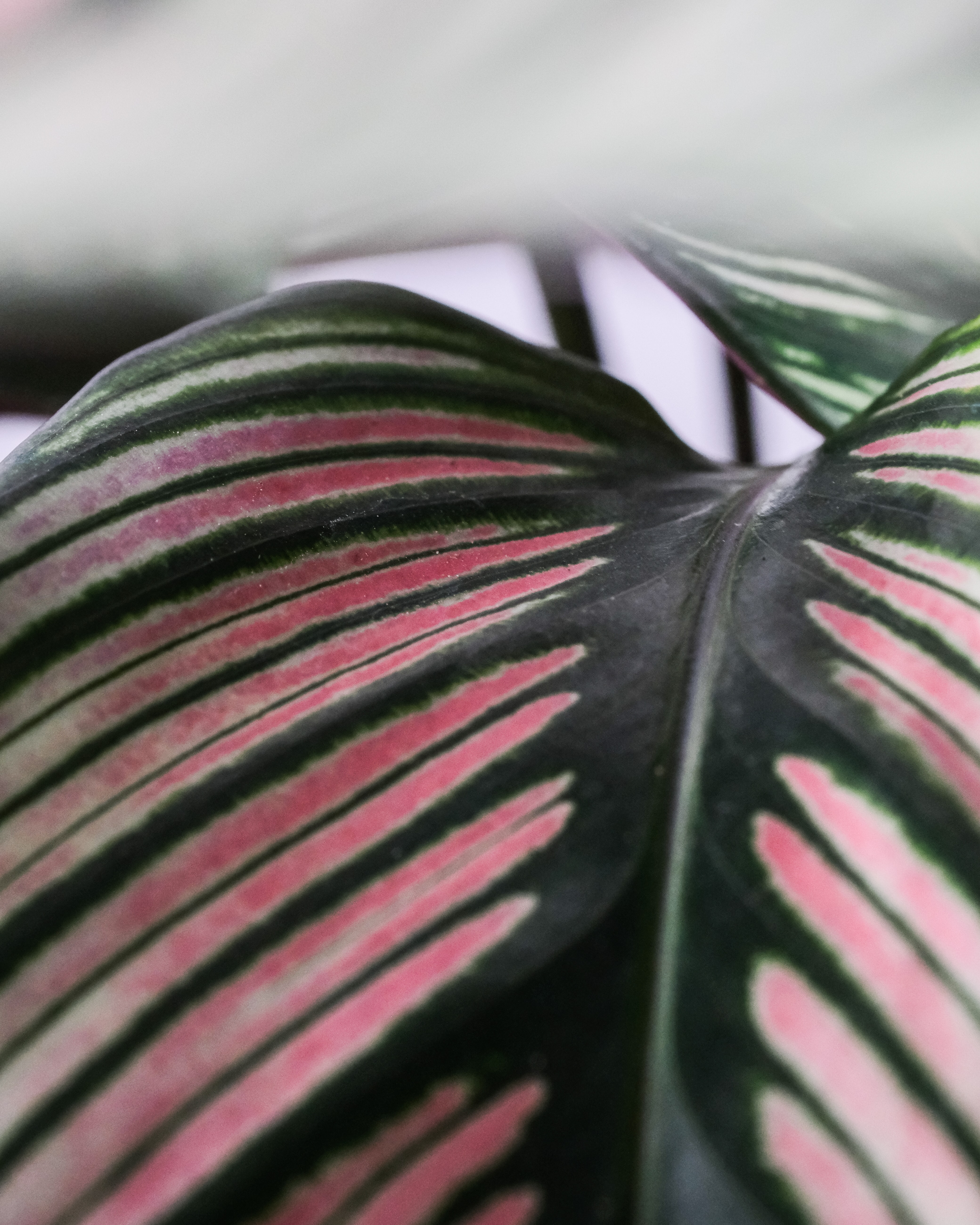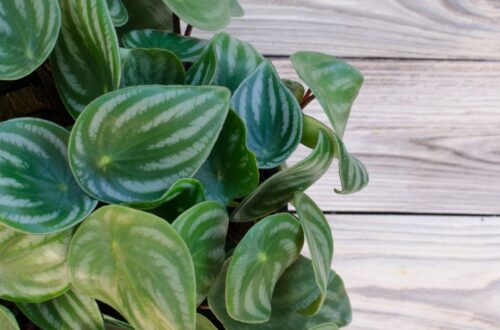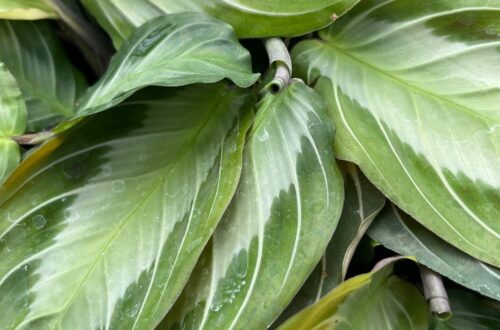
Are Calatheas Good Beginner Plants?
If you are familiar with houseplant-related content online, you may notice on plant genus notably absent from lists of plants that are good for beginners. Calatheas have a reputation for being challenging to care for, but can they still be good beginner plants?
While Calatheas do not fit the criteria of plants that are often considered beginner-friendly, like snake plants, pothos or ZZ plants, beginners can grow happy and healthy Calatheas by replicating their natural environmental conditions. With a bit of research, Calatheas can still be good beginner plants.
We’ll examine why types of plants are typically considered beginner-friendly, how Calatheas stack up against those plants, and ultimately how beginners can succeed with their Calatheas.
What is Considered a “Beginner-Friendly” Houseplant?
You see these listed on Pinterest and Instagram: “5 Beginner-Friendly Plants” or “10 Plants for Beginners,”…but what does that all really mean? Are some houseplants truly easier than others? What makes a houseplant good for beginners?
In most of these cases, a “beginner plant” is a plant that encompasses the following criteria:
- The soil can dry out without the plant suffering
- The houseplant can tolerate low to moderate humidity levels
- The plant can handle some neglect without suffering
- The houseplant can handle lower light conditions without suffering
Within this criteria, you will typically find a plant with thicker or waxy leaves, like a snake plant or a ZZ plant, or even a golden pothos which may have thinner or more delicate leaves but is still generally a hardy houseplant.
By This Definition, are Calatheas “Beginner-Friendly” Plants?
By this traditional definition of beginner-friendly plants, Calatheas are certainly not easy. While they tolerate lower light conditions, they prefer higher humidity levels and consistently moist soil.
It is true that Calatheas typically need more care and attention than other genera of houseplants. But, it doesn’t mean that beginners cannot bring a Calathea home and succeed. Many people (myself included) have killed ZZ plants, snake plants or other plants that do fall into the traditionally “easy” category of houseplants in a similar fashion that most people have struggled with Calatheas.
The key to having success with any houseplant is understanding the conditions where they thrive naturally. Then, doing your best to replicate those conditions. Calatheas prefer different conditions than what is often considered “beginner-friendly.” However, beginners can still grow and thrive with their Calatheas with some research and adjustments.

Where Do Calatheas Grow Naturally?
Calatheas don’t hail from dry desert conditions. They grow along the tropical forest floor in Latin America and have been introduced to Hawaii, where conditions are warm, humid, and with plenty of moisture. They receive dappled sunlight from the overhead tree canopy. They also enjoy very high humidity since the canopy would also trap the humidity emanating from the other tropical plants.
Now, depending on where you live, this is quite a different environment from the average household, where it may be colder, drier, brighter (or darker). Bringing such a plant into your home and hoping it will survive is a huge ask. But it can be done!
Understanding Calathea Care
For a deeper dive into Calathea Care, be sure to check out our blog, Calathea 101, but there are three important pinnacles to Calathea’s success (not in any particular order).
Water
Water is the number one hurdle for any plant owner, especially Calathea. Calatheas notably have very soft, delicate foliage, which means they cannot retain water in the leaves like a succulent-like plant (think snake plants with their thicker foliage). This means they rely on moist soil conditions to replenish their moisture. They do not like their soil completely drying out, which is something that other plants tolerate quite well. This doesn’t mean you should dump water into your Calathea’s soil daily since that leads to root rot. But you should give your Calathea more water when the soil is nearly dry but not fully dried out.
The type of water that you give your Calathea also matters. Tap water, often treated with minerals or chemicals, may affect your Calathea’s foliage. Using filtered water, rainwater, or even discarded freshwater aquarium water will avoid any brown tips on your plant. It’s also best to avoid cold water at all costs. This is true for any houseplant, as you risk shocking the root system. Room temperature water closer resembles the tropical rains that they are used to.
Humidity
Humidity is another factor that is somewhat related to water and is often overlooked by beginner houseplant owners. Most people understand what humidity is but do not understand how to find out how much humidity they have, how to make a space more humid and how it relates to plants.
Calatheas, like many tropical houseplants, have a process known as transpiration. The roots will absorb water from the soil, travel to the leaves through its vascular system, and then evaporate out the pores of the leaves. This is why tropical plants also create humidity. But, to that effect, they also have the company of other tropical plants within the jungle, replenishing that humidity.
Calatheas prefer humidity levels above 60%, which you may find naturally in your home. You can find out the humidity levels in your space with the help of a hygrometer. If your levels are below 60%, you will want to increase the humidity levels around your plant. The most efficient way to do this is with a humidifier. There are plenty of other hacks out there, but a humidifier is the most effective and beginner-friendly, as you can “set it and forget it.” To learn more, read some of the secrets to growing beautiful Calathea.
Pest Management and Prevention
Lastly, having a solid pest prevention and management plan in place is necessary to succeed with your Calathea houseplants. While any houseplant can be subject to pest problems, Calathea’s tend to be a little bit more susceptible to pests like spider mites and thrips. These pests, in particular, love to feast on plants in distress. Since most Calatheas experience distress in an average household environment, they are particularly vulnerable to pest problems, so people write them off for beginners.
Giving your Calathea ideal conditions and having a pest prevention/management plan in place will save you a lot of grief. What I have found particularly useful is:
- Give your Calatheas a “shower” once monthly, where you blast the leaves with water. This will knock off any single pests from the leaves and create an environment that pests don’t particularly enjoy. Don’t forget to blast the back of the leaves and stems, and align this practice with when your Calathea needs water.
- When you water your Calathea, check in on the leaves and the backs of the leaves to spot signs of pests.
- Isolate any new plants you bring home. This will prevent pests from spreading to your Calathea. Keep your Calathea far away from open windows, cut flowers and pets, which can unintentionally bring houseplant pests into the home.
- Keep a bottle of insecticidal soap on hand to act quickly if you spot a pest problem.
When it comes to pests, speed, persistence, and resilience is your best defence to keep your Calathea happy and healthy.
What Type of Calathea is Easiest for Beginners?
A few types of Calathea tend to be a bit hardier and more forgiving to occasional mishaps in their care. Make sure to check out our Top 5 Easiest Calathea to grow, but there is one particular Calathea that tends to stand out from the rest. This is the Calathea Freddie, sometimes called Calathea Concinna, but the botanical name is Goeppertia Concinna.
This type of Calathea doesn’t have some of the hallmarks of a typical Calathea. Notably, it doesn’t have the bright purple backing to the leaves. It is nonetheless a stunning and ornate plant. It also happens to be quite forgiving of late watering, humidity levels. Therefore, it is a bit closer to those markers we talked about that make it considered a “beginner plant.”

What is the Hardest Calathea Species to Grow?
In my experience, the most difficult Calathea is the Calathea White Fusion (Calathea Lietzei). While undoubtedly one of the most stunning Calathea varieties, it is very attractive to pests. Often this plant will pick up pests at greenhouses or in the shipping process. When you bring it home, you are already starting on the wrong foot. In addition, that beautiful white albo variegation on the leaves is absent in chlorophyll, which is needed for photosynthesis. This makes it even more sensitive.
A close second in difficulty is the Calathea Zebrina. Unfortunately, this plant, another stunning Calathea, is very vulnerable to pest problems due to its delicate, soft, fuzzy leaves. In addition, the Zebrina tends to be more vulnerable to minerals in the water and stress if watering is delayed.
Again, does this mean a beginner will immediately fail with either Calathea species? Possibly not. But they certainly tend to add additional challenges a beginner may find frustrating.

Are Calathea Houseplants Dramatic?
Calatheas have earned a reputation for being “dramatic” houseplants. They have those delicate leaves which can be quite reactive to external stressors. For example, if you have forgotten to water your Calathea, you may find it looking deflated, flat, or curled, which can be very shocking and stressful. Depending on how long the Calathea has been dry, you can remedy this by watering your plant. You may find your Calathea in a similar state if there is a severe pest infestation.
Having a ” dramatic ” plant may not necessarily be a negative trait. Paying attention to your plants’ appearance can help alert beginners to a problem. If your Calathea has leaves that have started to curl, you will know it isn’t happy and can immediately investigate the cause.
In the past, this has alerted me to pest problems that I could immediately treat, water or potting problems that I could fix right away, or other issues. If you compare this to a snake plant infested with mealybugs, you may not notice it if your snake plant, from a distance, appears happy and healthy.
Why Do People Not Like Calatheas?
This story is very familiar: People are completely enthralled by the sight of a Calathea, bring it home with the expectation that it can be cared for like a snake plant, and struggle with it. Then they swear off the genus completely.
People who have multiple houseplants or collect many houseplants may find Calathea care too time-consuming, too pest prone or too involved and move on to other plants.
What Are Some of the Benefits of Owning Calatheas?
Calatheas are some of the most beautiful types of plants that you could own. People who love spending lots of time with their plants, cleaning their leaves, checking for pests, and tending to the environment enjoy keeping Calatheas.
Collectors that have many houseplants tend to enjoy their Calatheas. They do tend to offer more care than their other plants simply for the act of caring. Caring for plants can also be a meditative practice for some. Calatheas offer something different than a snake plant, which is best left alone.
Calatheas are also very tolerant of low light conditions. They are perfect for those who don’t have a ton of natural light. They are also great for those looking for a plant to fill a place with medium or lower light levels.
One of my favourite things about Calatheas is the consistent required care allows you to catch problems much earlier. It keeps pests from spreading to the rest of my collection. I love keeping a Calathea displayed in a white ceramic pot where the foliage is the star of the show. It makes quite the statement plant.
Learn More About Calathea Care
As a Calathea lover myself, there are plenty of resources out there to help you on your journey, whether you are a beginner or a seasoned plant owner. There are also a few resources that I have found helpful on my journey, particularly from other planty people in the industry.



